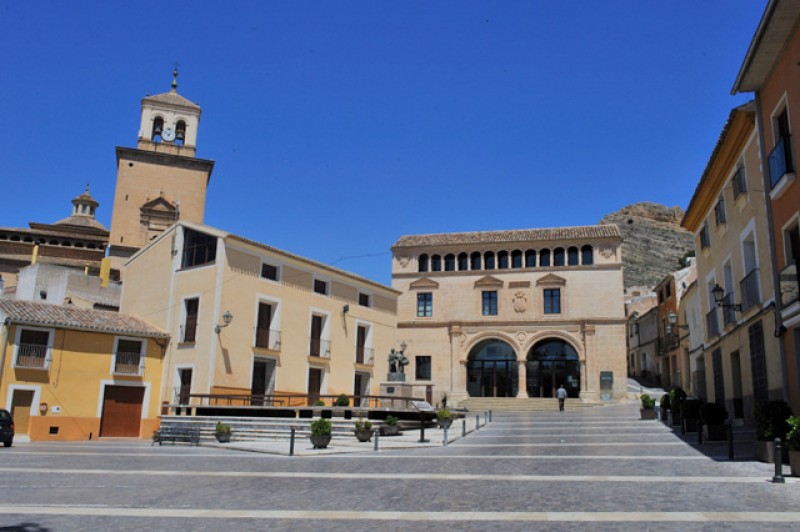- Region
- Águilas
- Alhama de Murcia
- Jumilla
- Lorca
- Los Alcázares
- Mazarrón
- San Javier
-
ALL AREAS & TOWNS
- AREAS
- SOUTH WEST
- MAR MENOR
- MURCIA CITY & CENTRAL
- NORTH & NORTH WEST
- TOWNS
- Abanilla
- Abarán
- Aguilas
- Alamillo
- Alcantarilla
- Aledo
- Alhama de Murcia
- Archena
- Balsicas
- Blanca
- Bolnuevo
- Bullas
- Cañadas del Romero
- Cabo de Palos
- Calasparra
- Camping Bolnuevo
- Campo De Ricote
- Camposol
- Canada De La Lena
- Caravaca de la Cruz
- Cartagena
- Cehegin
- Ceuti
- Cieza
- Condado de Alhama
- Corvera
- Costa Cálida
- Cuevas De Almanzora
- Cuevas de Reyllo
- El Carmoli
- El Mojon
- El Molino (Puerto Lumbreras)
- El Pareton / Cantareros
- El Raso
- El Valle Golf Resort
- Fortuna
- Fuente Alamo
- Hacienda del Alamo Golf Resort
- Hacienda Riquelme Golf Resort
- Isla Plana
- Islas Menores & Mar de Cristal
- Jumilla
- La Azohia
- La Charca
- La Manga Club
- La Manga del Mar Menor
- La Pinilla
- La Puebla
- La Torre
- La Torre Golf Resort
- La Unión
- Las Palas
- Las Ramblas
- Las Ramblas Golf
- Las Torres de Cotillas
- Leiva
- Librilla
- Lo Pagan
- Lo Santiago
- Lorca
- Lorquí
- Los Alcázares
- Los Balcones
- Los Belones
- Los Canovas
- Los Nietos
- Los Perez (Tallante)
- Los Urrutias
- Los Ventorrillos
- Mar De Cristal
- Mar Menor
- Mar Menor Golf Resort
- Mazarrón
- Mazarrón Country Club
- Molina de Segura
- Moratalla
- Mula
- Murcia City
- Murcia Property
- Pareton
- Peraleja Golf Resort
- Perin
- Pilar de la Horadada
- Pinar de Campoverde
- Pinoso
- Playa Honda
- Playa Honda / Playa Paraíso
- Pliego
- Portmán
- Pozo Estrecho
- Puerto de Mazarrón
- Puerto Lumbreras
- Puntas De Calnegre
- Region of Murcia
- Ricote
- Roda Golf Resort
- Roldan
- Roldan and Lo Ferro
- San Javier
- San Pedro del Pinatar
- Santiago de la Ribera
- Sierra Espuña
- Sucina
- Tallante
- Terrazas de la Torre Golf Resort
- Torre Pacheco
- Totana
- What's On Weekly Bulletin
- Yecla


- EDITIONS:
 Spanish News Today
Spanish News Today
 Alicante Today
Alicante Today
 Andalucia Today
Andalucia Today
The Plaza de Arriba in Jumilla
A historic central plaza which has retained the same core elements for the last 500 years
 The “Plaza de Arriba” is without doubt one of the most important central points in the old quarter of Jumilla and has been so since the fifteenth century.
The “Plaza de Arriba” is without doubt one of the most important central points in the old quarter of Jumilla and has been so since the fifteenth century.
In spite of a number of modifications undertaken during the last 500 years, it still maintains the same basic elements as when it was first constructed, namely the former Palacio del Concejo which is now the municipal archaeological museum (the Museo Jerónimo Molina), the Iglesia Mayor de Santiago and the old posada, or grain store, now the home of the Universidad Popular.
In the sixteenth century the town of Jumilla experienced a period of significant expansion, spreading out from around the Iglesia de Santa María towards the south and east around the foot of the castle, enveloping this area and absorbing it into the urban base of the town.
At this point the area created in front of these buildings became known as the Plaza de San José and was re-named as the Plaza de Arriba (which literally means the plaza at the top) a century later in order to distinguish it from the “Plaza de Abajo" or plaza at the bottom (which is now the Plaza de la Constitución, or Jardín de las Ranas), when the urban growth of the town had reached new levels.

By this time the need to build a new and larger marketplace was pressing, and the new plaza was constructed lower down in the main urban area of the town, becoming the main social gathering place where not only the market but also bullfights were held. In 1754 there is documented evidence that new towers were built in the Plaza de Abajo in order to squeeze in more onlookers for the bullfights held there.
The name Plaza de Arriba has been maintained since, apart from during the years of dictatorship when the townspeople were instructed to refer to it as the “Plaza de los Mártires” (Plaza of the martyrs), an apparently fruitless exercise as the townsfolk inevitably continued to refer to it as they always had done.
The plaza remains a central focal point for social activity in the town, and is still the venue for many open-air concerts, cultural activities and fiestas.
It is, as its name suggests, high up in the town, and parking is very limited, so a walk uphill is often required to attend one of the many events held there or visit the museum.
For more information about visiting Jumilla, including what's on, local news and all of the bodegas on the Jumilla wine route, visit the home page of Jumilla Today.
